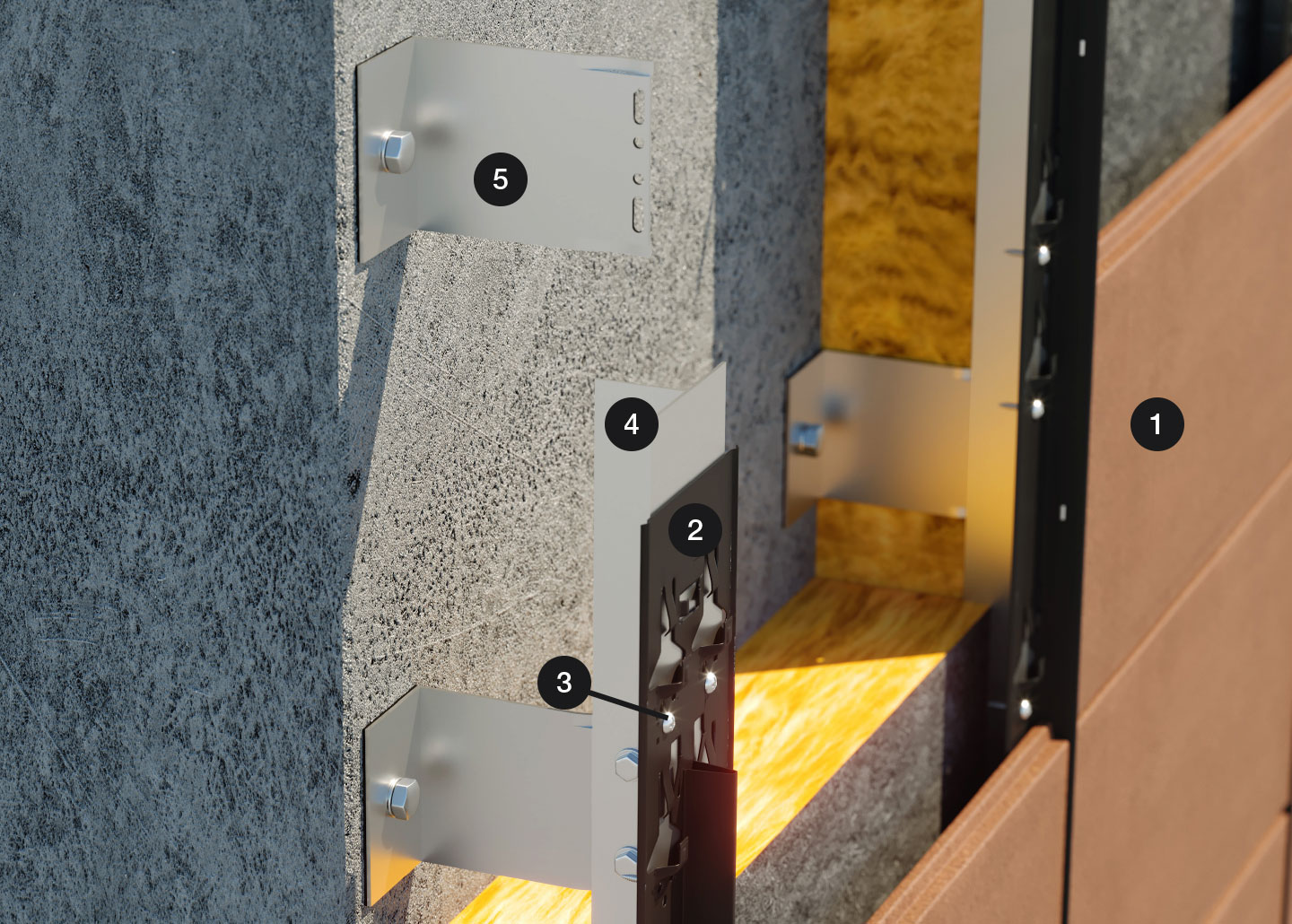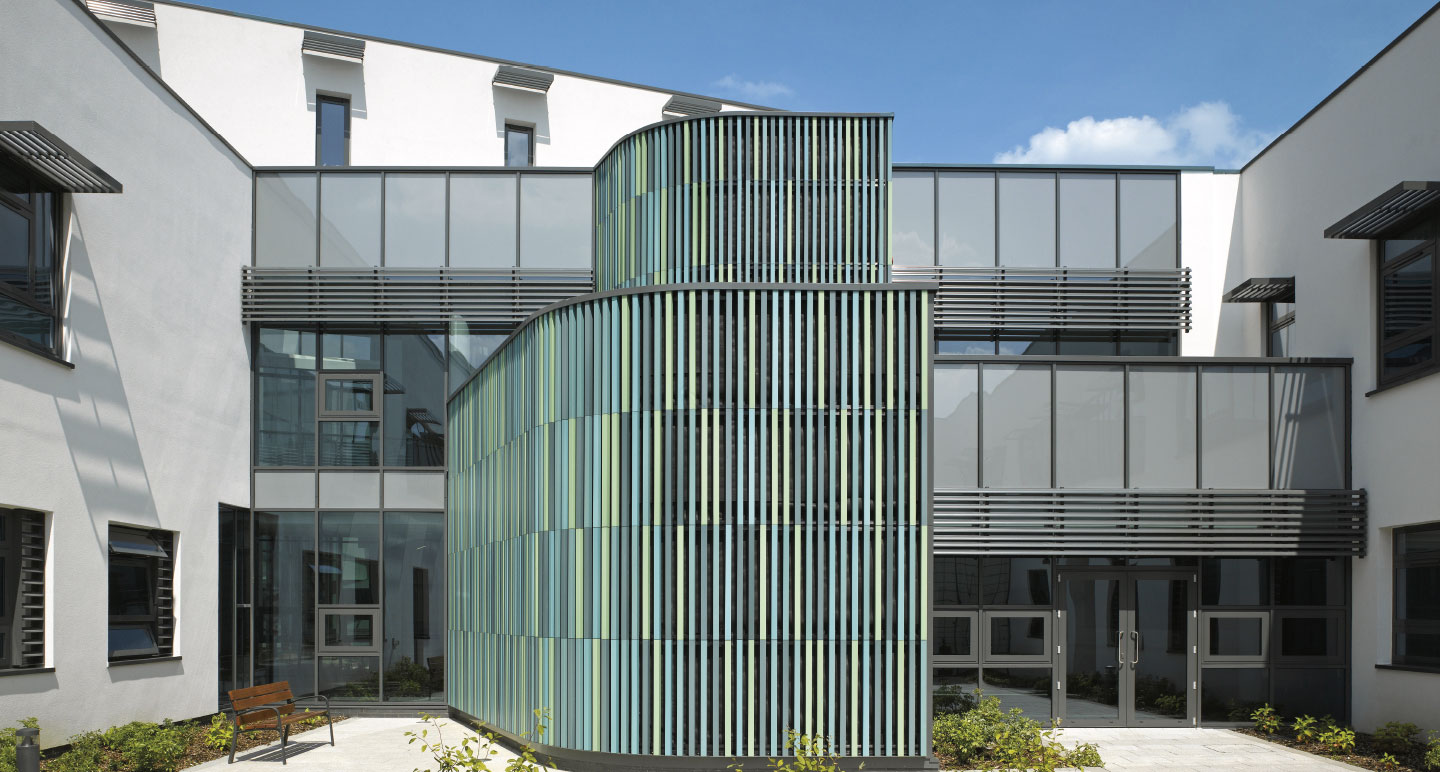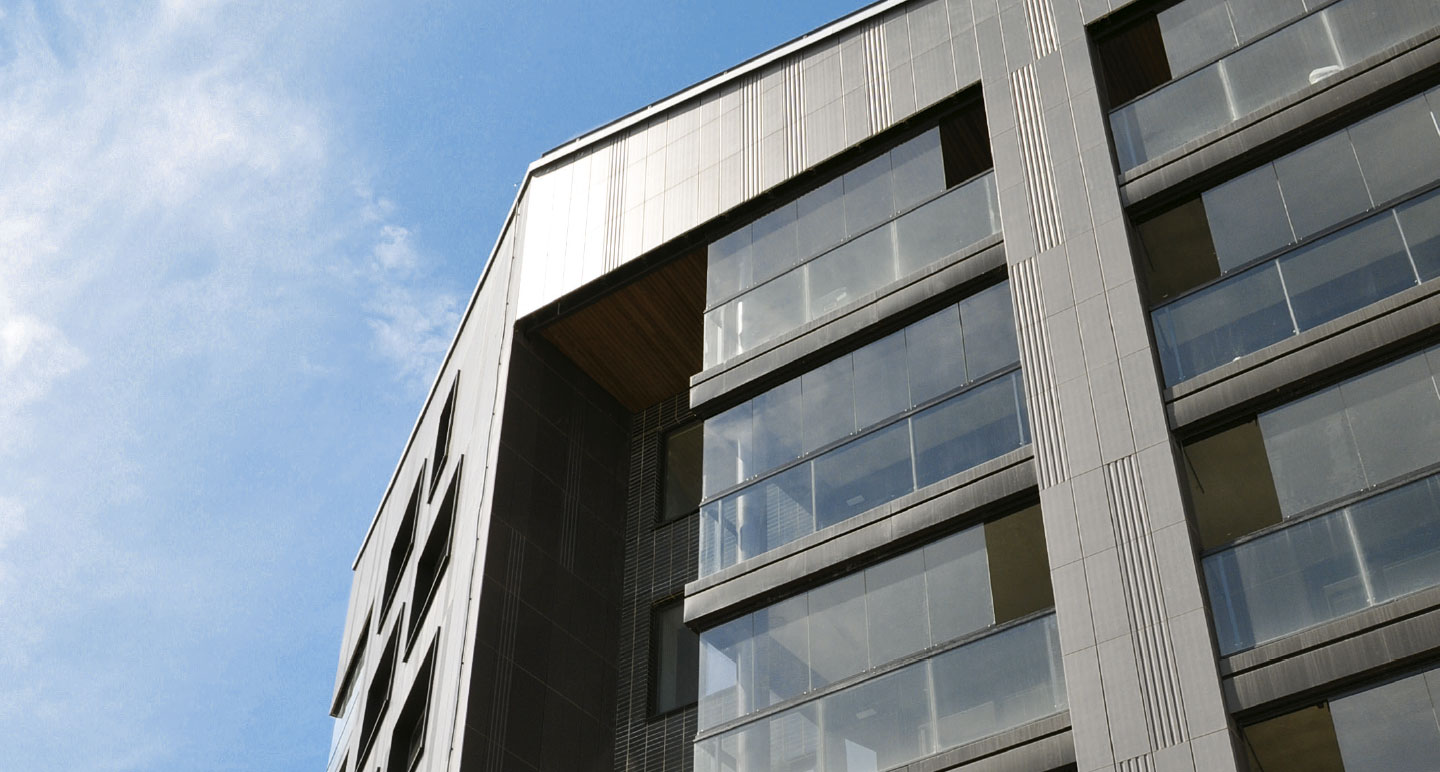Fastening with vertical system rail K20
System description
The KeraTwin® K20 facade panels are simply hung in the vertical system rail with the holding grooves on the reverse side. For mounting the panels, no additional tools are required. The compression spring and removal protection integrated in the system rail prevents clattering and constraining forces in the case of alternating wind loads and also the easy removal of panels. The position of the panels is secured either by means of a joint profile adjusted to the joint width or by means of spacers.

- Facade panel KeraTwin® K20
- Vertical system rail K20, article 620
- A4 stainless steel screw, article 659 (alternatively, fastening with AI blind rivet, article 658, is possible), fixing necessary under each fastening hook!
- Vertical bearing profile (basic substructure) Minimum width 80 mm / recommended width 100 mm
- Wall bracket (basic substructure)
- Pay attention to profile butt joint!
- A profile butt joint of the vertical bearing profiles behind a panel is not allowed! See standard technical detail drawings.

Mounting instructions for KeraTwin® K20 – Fastening by means of vertical system rail K20
Substructure
The mounting of the substructure must be carried out according to project-specific, static calculation. The general approval Z-10.3-844 of the construction supervisory authority serves as basis..
- The profiles of the basic substructure have to be mounted perpendicularly and in a flush way. (T-profile width ≥ 80 mm; recommended width ≥ 100 mm)
- The system rails K20 (Art. no. 620, 625, 630) have to be precisely aligned horizontally and fastened at the provided holes by means of screws (Art. no. 659) or rivets (Art. no. 658).
- The distance of the system rails K20 in horizontal direction must correspond to the longitudinal grid of the panels.
- The length of the vertical profiles must be divisible by the height of the panel format and should not exceed the height of a storey of the building.
- A profile butt joint behind a panel is not allowed.
- In case of open vertical joints, one joint spacer per panel (Art. no. 645) is inserted in a centric extrusion hole of the panel.
- In case of closed vertical joints, the joint profile (Art. no. 640 in case of single-span girder; plug-in joint profile, Art. no. 647, in case of single-span girder with jibs) must be used.
Accessories










- * legally protected
- Profile lengths available:
- Grid 15 cm, 60 cm: 2992 mm · Grid 22,5 cm, 32,5 cm: 2917 mmGrid 17,5 cm: 2967 mm · Grid 20 cm, 25 cm, 30 cm, 37,5 cm, 50 cm: 2992 mmGrid 22,5 cm, 32,5 cm: 2917 mm · Grid 27,5 cm: 3017 mmGrid 35 cm, 40 cm: 2792 mm · Grid 55 cm: 3292 mmGrid 45 cm: 2692 mm
- System rail K20 available for panel grids of
- 15 cm - 17,5 cm - 20 cm - 22,5 cm - 25 cm - 27,5 cm - 30 cm - 32,5 cm - 35 cm - 37,5 cm - 40 cm - 45 cm - 50 cm - 55 cm - 60 cm. Other grids on request.
Important: The use of silicone caoutchoucs must be absolutely avoided, because silicone fluids segregate and effect sticky surfaces on which dirt adheres. Therefore, only use the system components mentioned (foamed pieces, EDPM rubber profile, neoprene rubber washer) and pointing, bonding and sealing materials recommended by us. We will be pleased to inform you in detail. The usual final cleaning after completion of the construction works is still required. A warranty for the system KeraTwin® K20 in the scope of the general approval no. Z-10.3-844 of the construction supervisory authority only applies if the system components shown on these pages are used.



